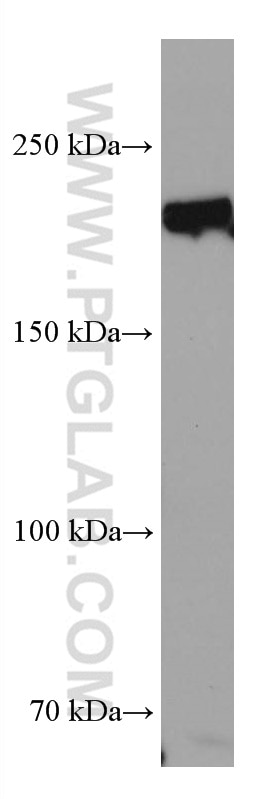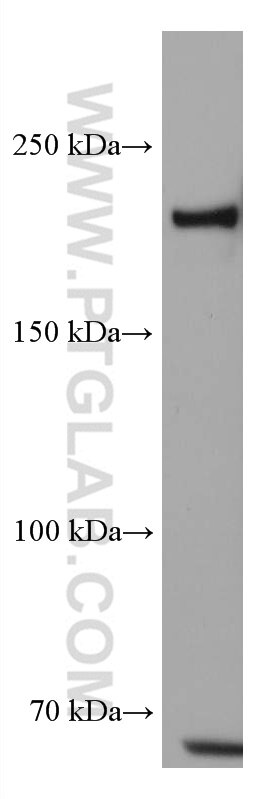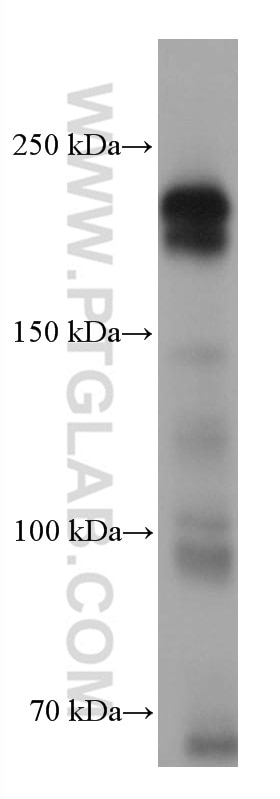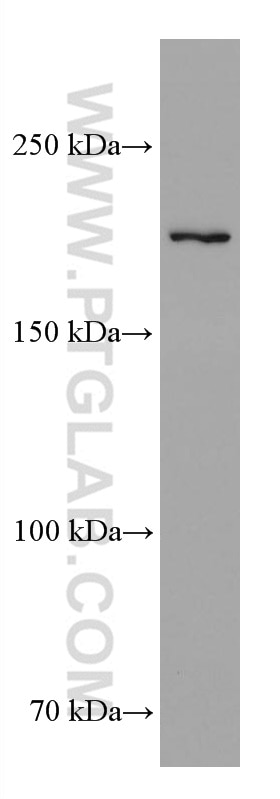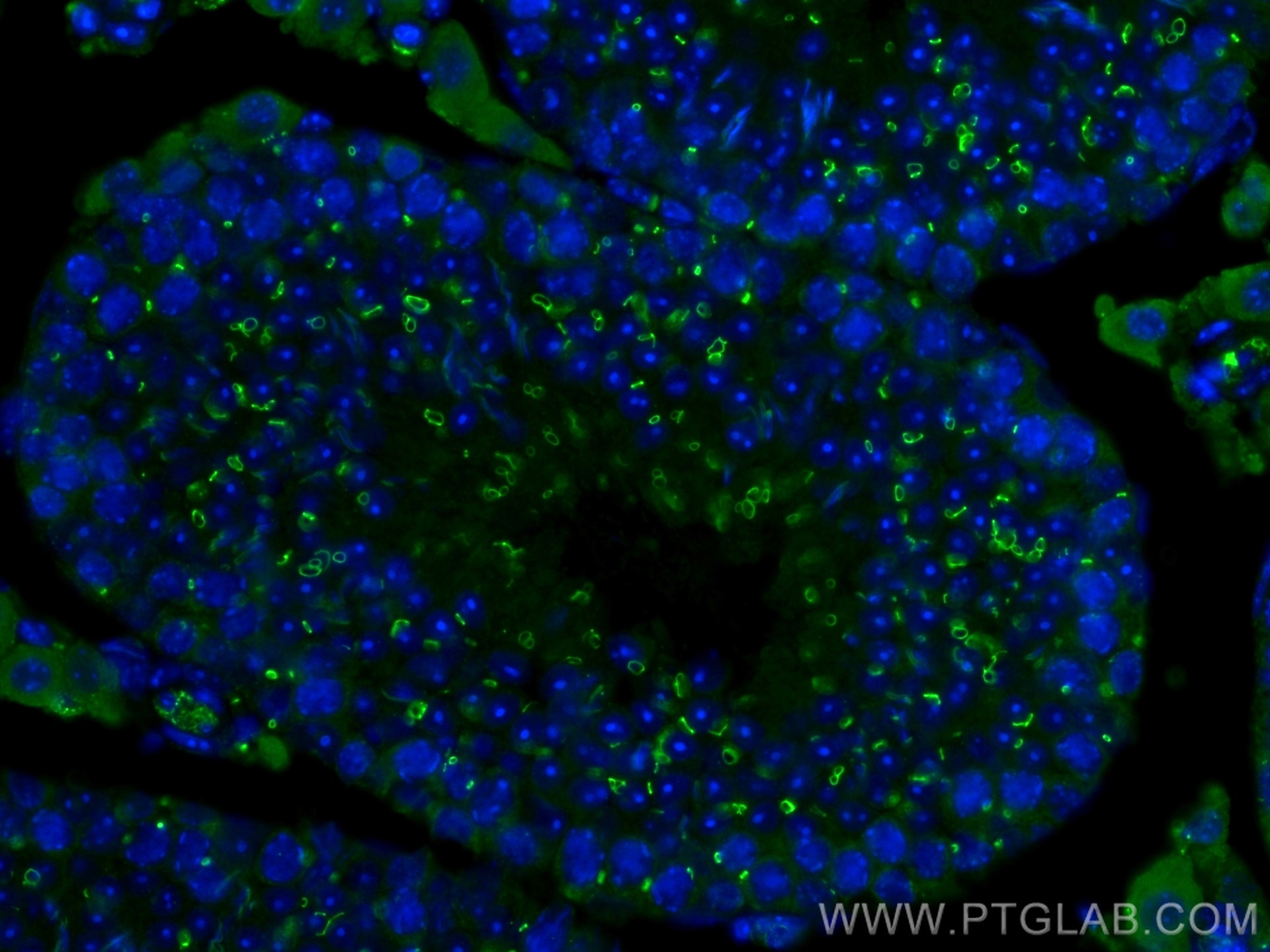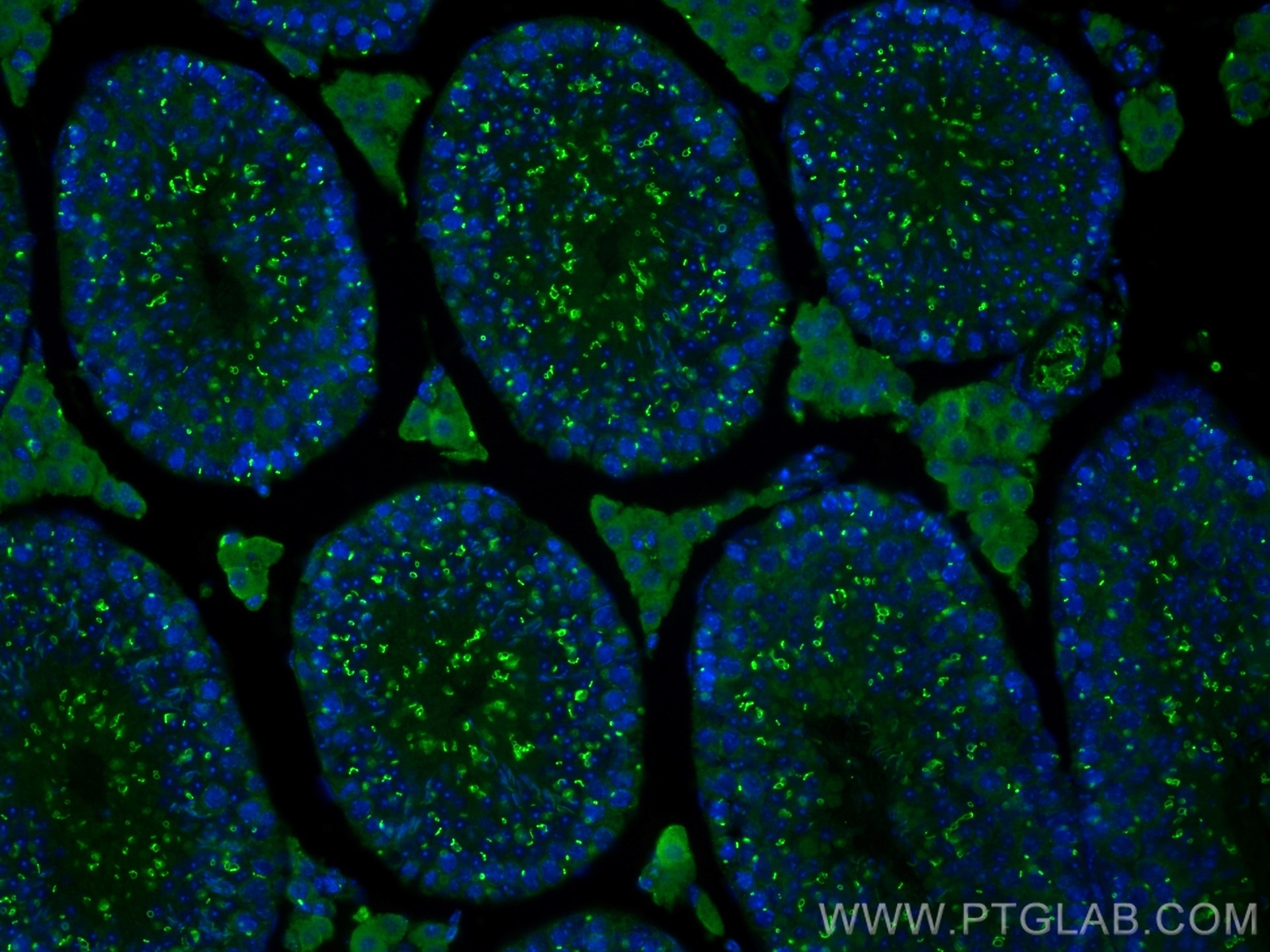TEX14 Monoklonaler Antikörper
TEX14 Monoklonal Antikörper für WB, IF-P, Indirect ELISA
Wirt / Isotyp
Maus / IgG2a
Getestete Reaktivität
human, Kaninchen, Maus, Ratte
Anwendung
WB, IF-P, Indirect ELISA
Konjugation
Unkonjugiert
CloneNo.
1A11D6
Kat-Nr. : 67982-1-PBS
Synonyme
Geprüfte Anwendungen
Produktinformation
67982-1-PBS bindet in WB, IF-P, Indirect ELISA TEX14 und zeigt Reaktivität mit human, Kaninchen, Maus, Ratten
| Getestete Reaktivität | human, Kaninchen, Maus, Ratte |
| Wirt / Isotyp | Maus / IgG2a |
| Klonalität | Monoklonal |
| Typ | Antikörper |
| Immunogen | TEX14 fusion protein Ag13143 |
| Vollständiger Name | testis expressed 14 |
| Berechnetes Molekulargewicht | 957aa,107 kDa; 1497aa,168 kDa |
| Beobachtetes Molekulargewicht | 180 kDa |
| GenBank-Zugangsnummer | BC040526 |
| Gene symbol | TEX14 |
| Gene ID (NCBI) | 56155 |
| Konjugation | Unkonjugiert |
| Form | Liquid |
| Reinigungsmethode | Protein-A-Reinigung |
| Lagerungspuffer | PBS only |
| Lagerungsbedingungen | Store at -80°C. 20ul Größen enthalten 0,1% BSA. |
Hintergrundinformationen
Tex14 is required both for the formation of intercellular bridges during meiosis and for kinetochore-microtubule attachment during mitosis. Intercellular bridges are evolutionarily conserved structures that connect differentiating germ cells and are required for spermatogenesis and male fertility. Tex14 acts by promoting the conversion of midbodies into intercellular bridges via its interaction with CEP55: interaction with CEP55 inhibits the interaction between CEP55 and PDCD6IP/ALIX and TSG101, blocking cell abscission and leading to transform midbodies into intercellular bridges.Tex14 also plays a role during mitosis: recruited to kinetochores by PLK1 during early mitosis and regulates the maturation of the outer kinetochores and microtubule attachment.
